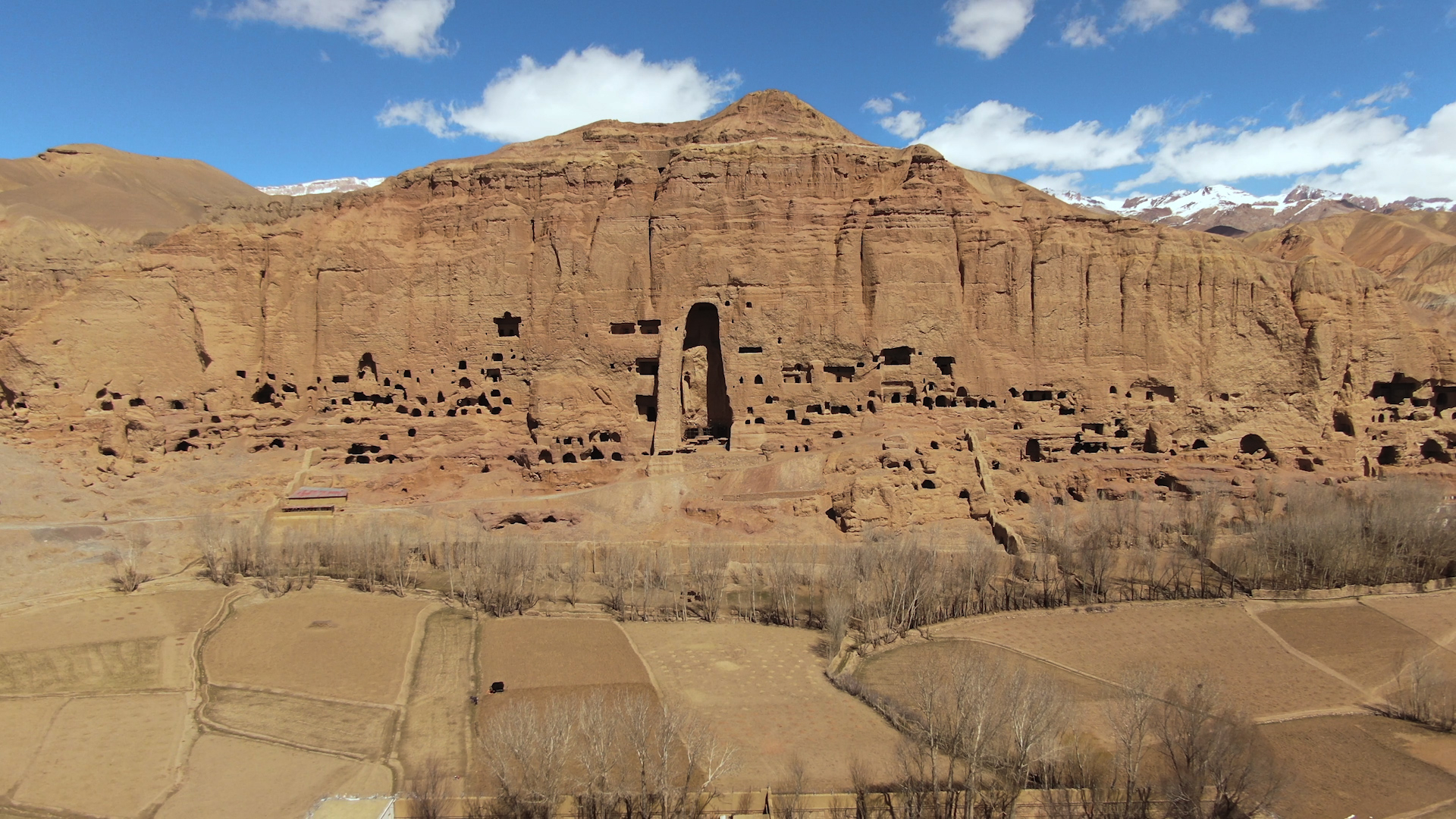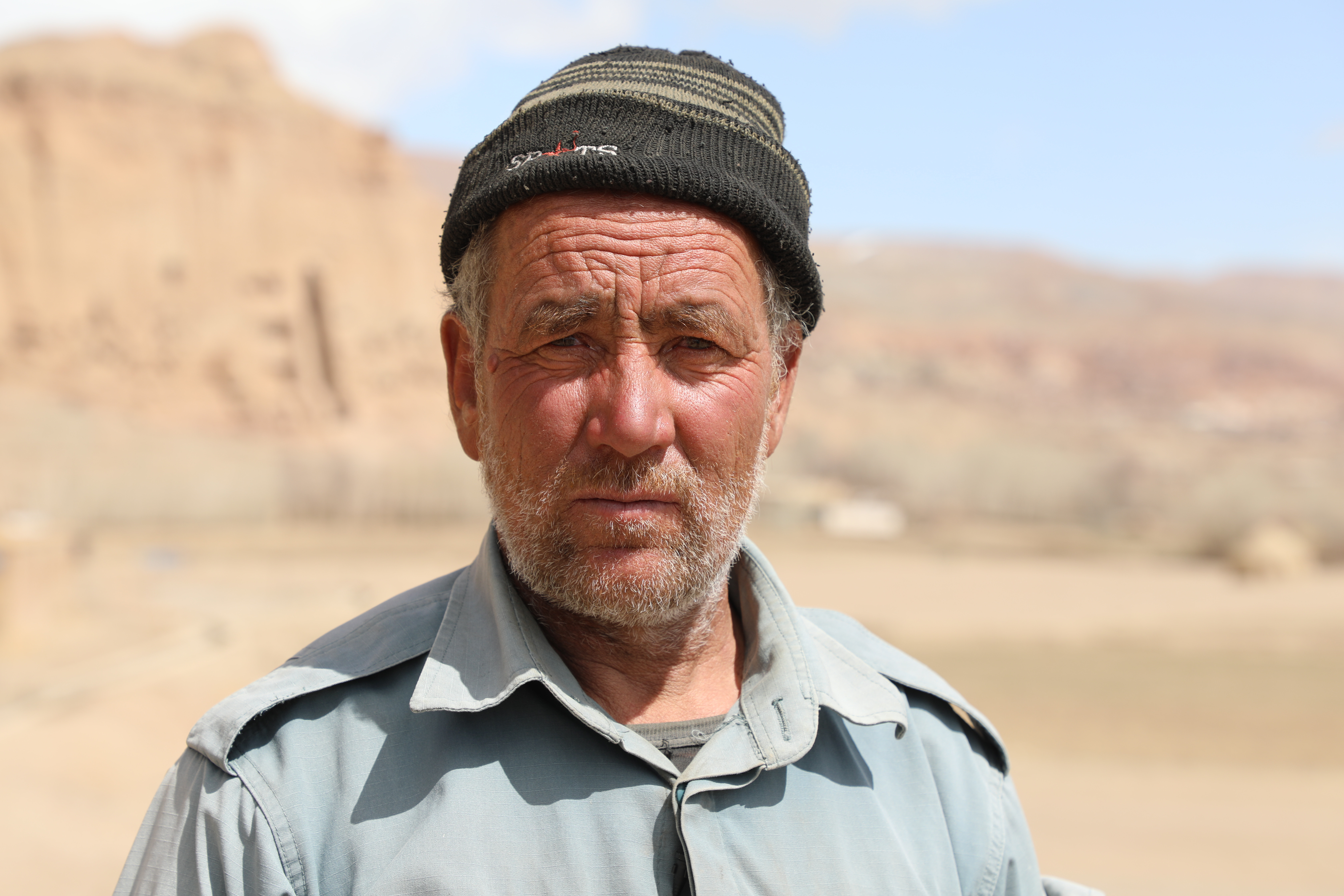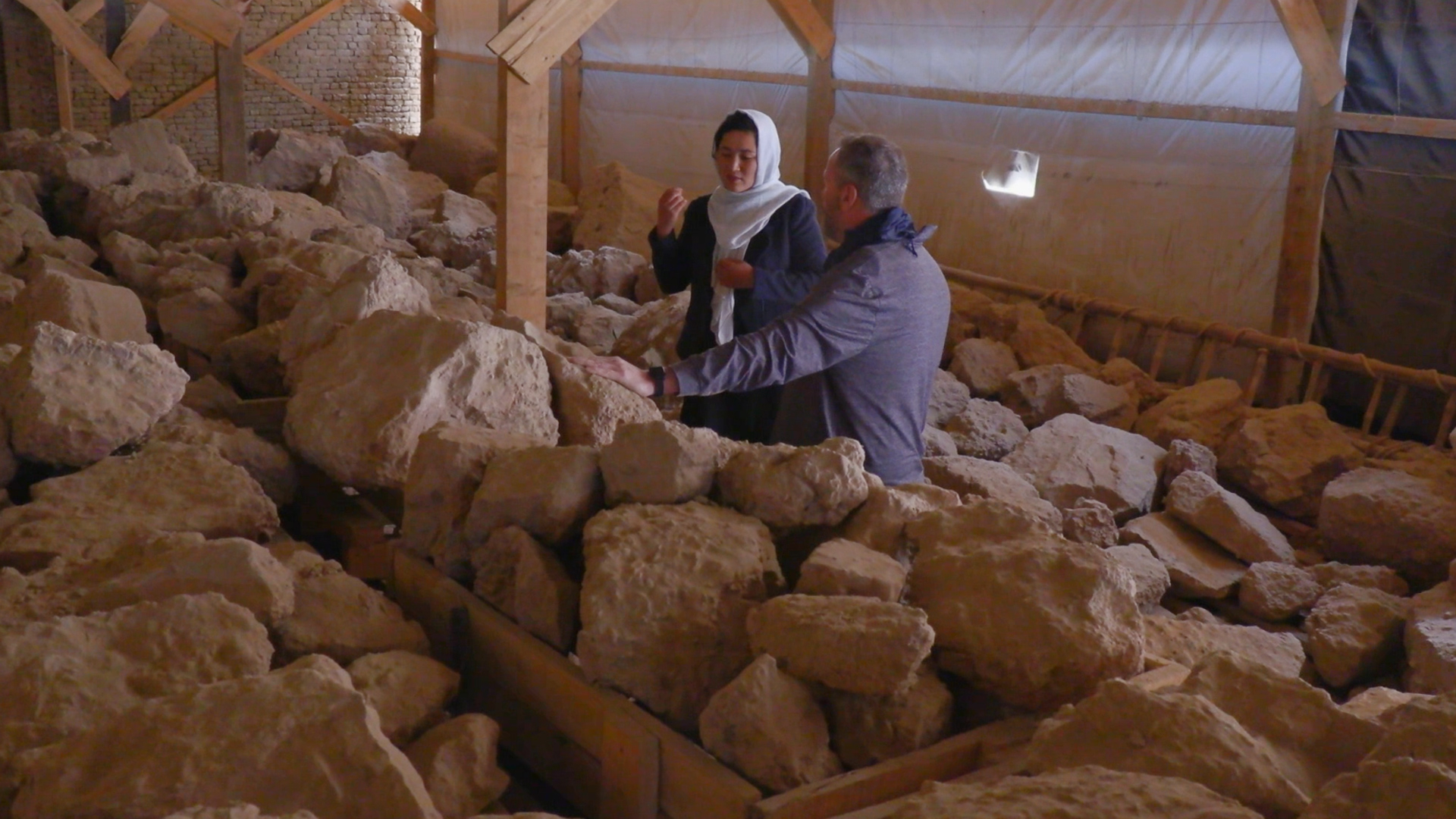

Patiently, Sayed Mirza Hussain wrestles with the rim of a well-worn bicycle. He is trying to help the owner squeeze many more miles out of his only mode of transportation.
Hussain lives in the central Afghan town of Bamyan. Much of what the outside world knows about Bamyan centers around the two giant Buddhas that were carved into the Hindu Kush Mountains hundreds of years ago.
But today, there are just giant holes in the mountain where the great statues once stood.
"I always feel sad, disappointed, and uneasy when I drive past this area," said Hussain.
The Buddhas were destroyed in early 2001 by the Taliban who called it "idol worship." They were blown up in a dramatic fashion, which shocked and sent horror to much of the world.

Large holes scar the mountainside where the Bamyan Buddhas used to be. /CGTN Photo
For Hussain, sadness penetrates deep into his soul as the Taliban forced him to plant the explosives on the iconic statues, reducing them to rubble. He was marched to the top of the mountain, and given a choice: plant the explosives while dangling from a rope or be tossed off the edge of the cliff to a certain death. His friend was forced to help, but the man had a heart attack and died.
"I took his body to a cave and laid a blanket over him," said a solemn Hussain.
The Bamyan of today looks nothing like it did in 2001. Nowadays, it is thriving as a healthy downtown and residents there live peacefully. But Hussain will never forget being forced to drill holes and plant dynamite in an event that is forever linked to one of the darkest episodes in Afghanistan's long and storied history.
He remembers being captured by the Taliban when they took over the city, saying: "The first day I was captured I was beaten so badly I could not believe I survived it. I lost consciousness for 24 hours."

Sayed Mirza Hussain said to this day he still gets threats to not talk about what he did. /CGTN Photo
His reaction to watching the Buddhas crumble after the blast was one of heartbreak and guilt.
"We felt devastated and upset. It was a world-class statue but we destroyed it with our own hands. People came from all over the world to see it, and we simply destroyed it," said Hussain.
Much of the rubble was stolen and carted off by smugglers. But many are trying to determine if the statues can somehow be rebuilt.
Anar Gul Ahmadi is an archaeologist from Bamyan, and she's a recent college graduate. When she looks at rocks scattered among three sheds, Ahmadi sees the world's most complex jigsaw puzzle.
"My concern is that they are stored in a place where people step on them and they will deteriorate and when we finally do want to work on restoring the Buddhas, they will be in an awful condition," Ahmadi said.

Anar Gul Ahmadi looks at the remnants of the Buddhas. She says poor storage conditions will lead to further destruction of the only pieces that remain. /CGTN Photo
There are some bright spots – the mountains and numerous caves are now protected by the UNESCO which recognized the area as a historical Buddhist sanctuary where East meets West along the Silk Road.
But Afghanistan remains a dangerous nation, and few outside the country can make it to this town to see what remains of the historical relic. And, even fewer know the heartache that Hussain says he will carry to his grave.
"I always think about what a horrible thing I did back then. I wish I would have been killed. But, it didn't happen. Now this feeling of guilt kills me all the time. But what could I have done? They would have killed me if I didn't do it," said Hussain.
It's a decision that no one should have to make.
Read More:

Copyright © 2018 CGTN. Beijing ICP prepared NO.16065310-3
Copyright © 2018 CGTN. Beijing ICP prepared NO.16065310-3